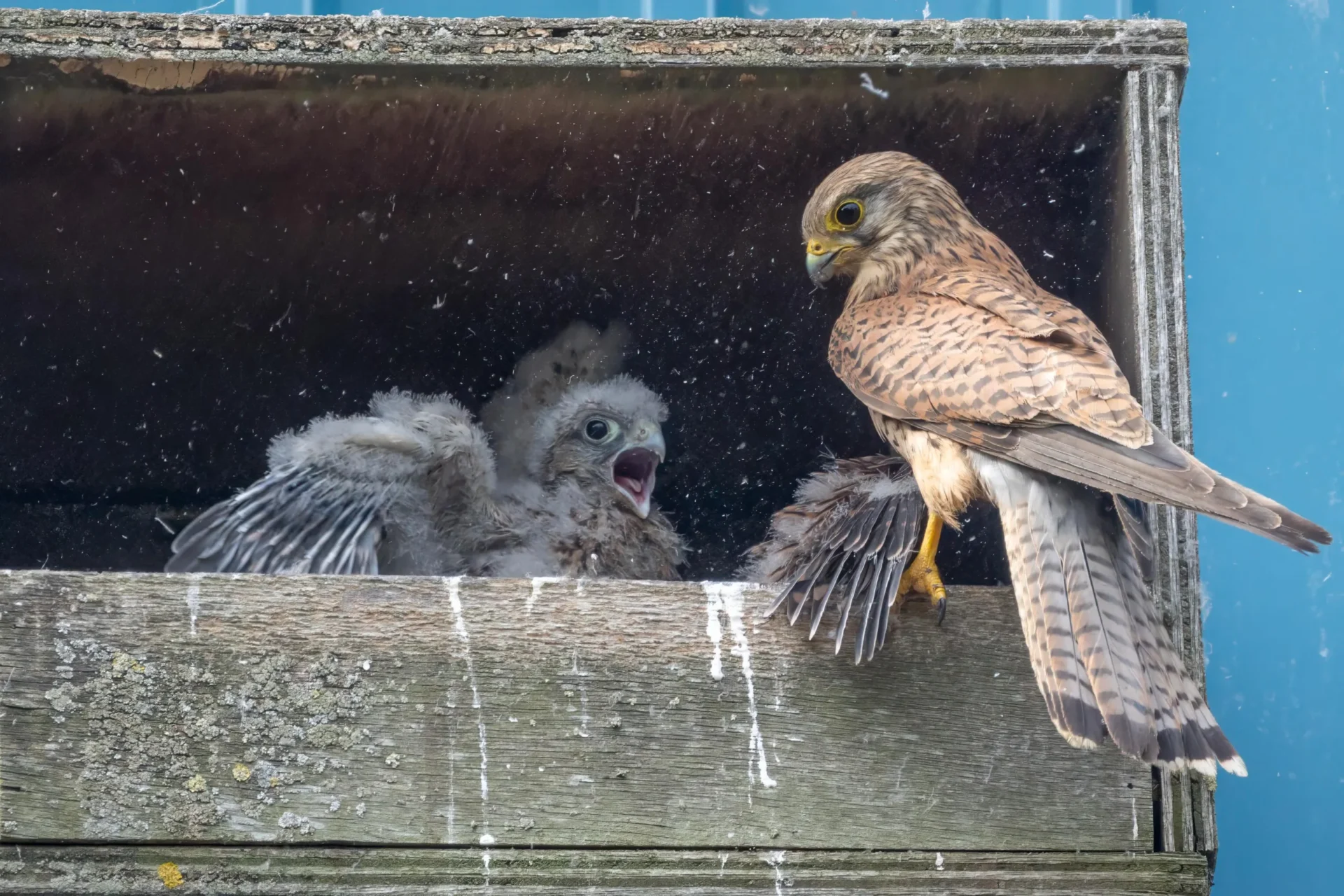A seven-minute drive separates them from a street named after them.
But cared for by a single mother, kestrels have once again taken up residence in a box some 30ft from the ground on a factory building in Wisbech.
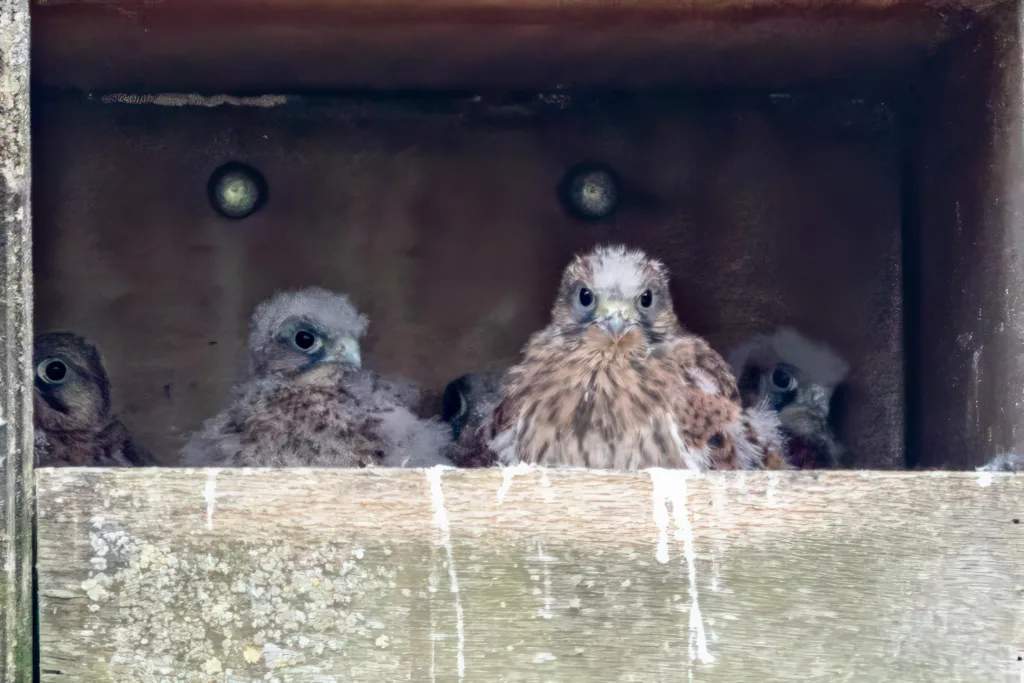
Residents believe this is the fifth year in succession that the ‘bird box’ has been home to nesting kestrels.
The box is on the corner of West Parade and Horseshoe Terrace, Wisbech – two miles from Kestrel Drive, Wisbech.
Photographer Terry Harris captured the comings and goings over several hours to watch from a distance the tender moments of this unusual family home.
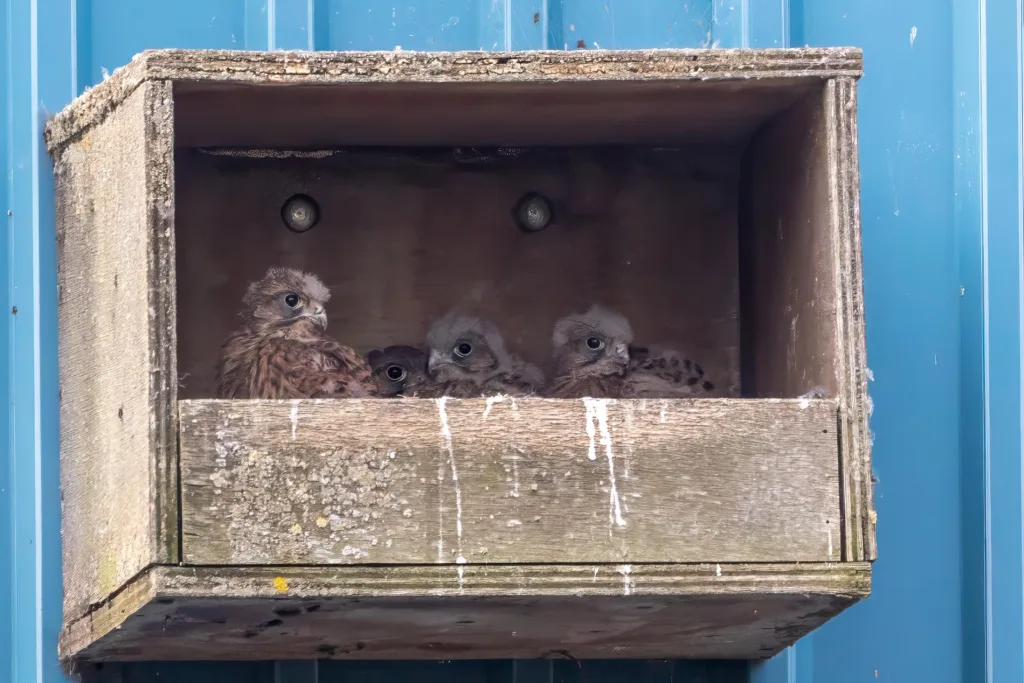
Sunday 18 June 2023.
Picture by Terry Harris.
Kestrels are resilient and, say experts, enjoy extremely sharp eyesight; they are said to be able to spot a beetle, for instance, from 50 metres away.
They are also known to be able to see ultraviolet light, which is invisible to the human eye.
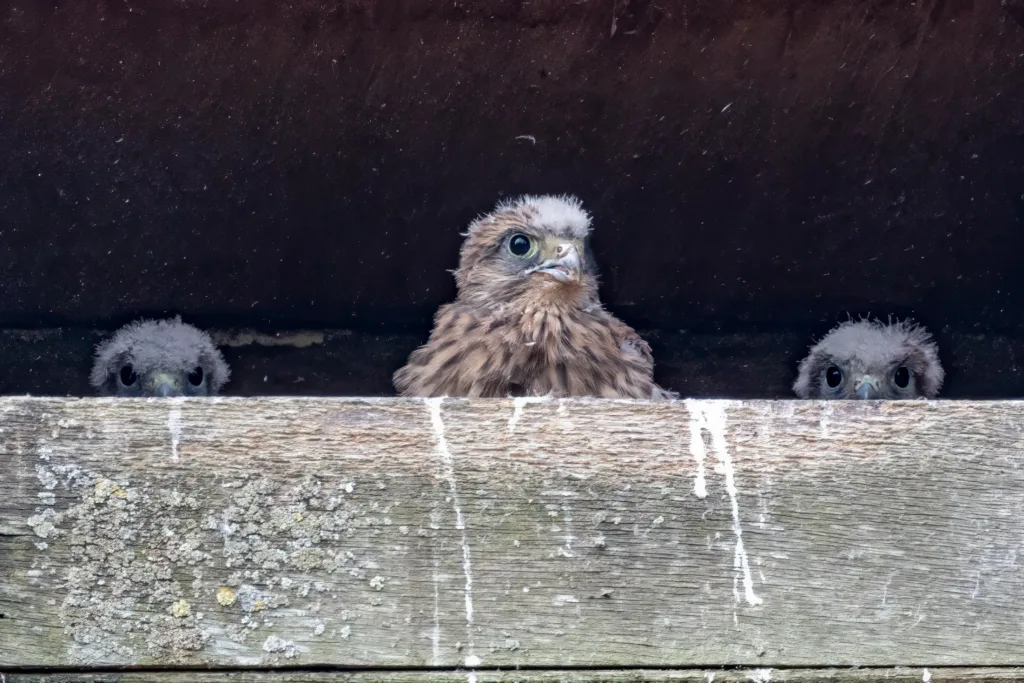
Sunday 18 June 2023.
Picture by Terry Harris.
That means, for example, they can detect such useful clues as the urine trails left by rodents on the ground, helping them find their prey.
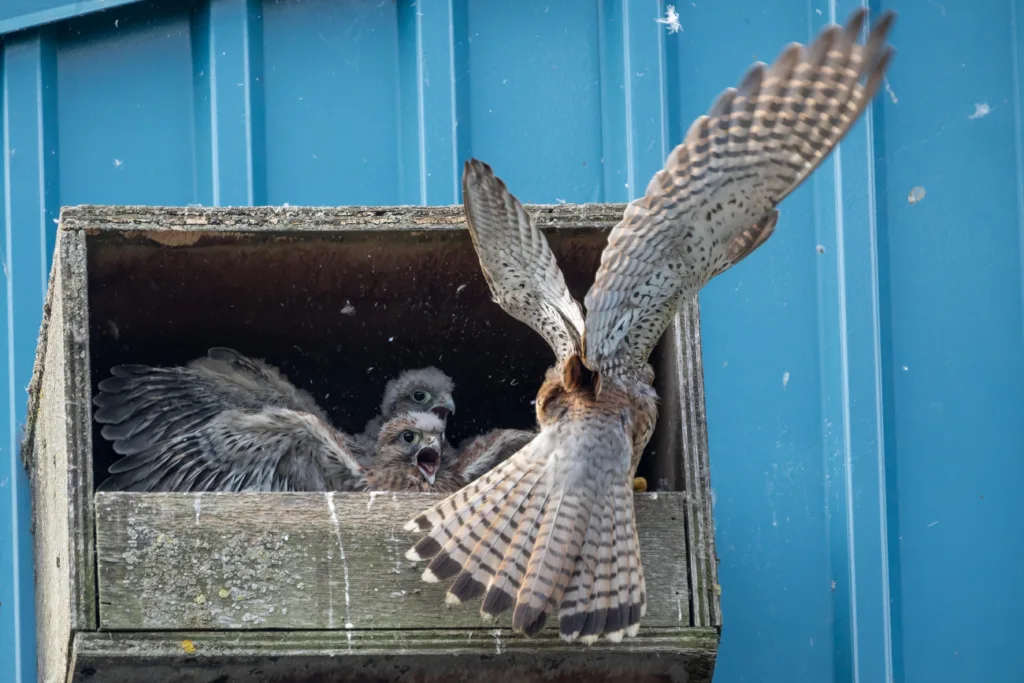
Sunday 18 June 2023.
Picture by Terry Harris.
And if you want another not well-known fact about the kestrel, here’s one provided by the RSPB.
“Did you know that Kestrels are the only bird of prey capable of hovering?” says the RSPB Twitter feed.
“But they can’t flap their wings fast enough to do it alone – they rely on flying into wind to give them lift!”


